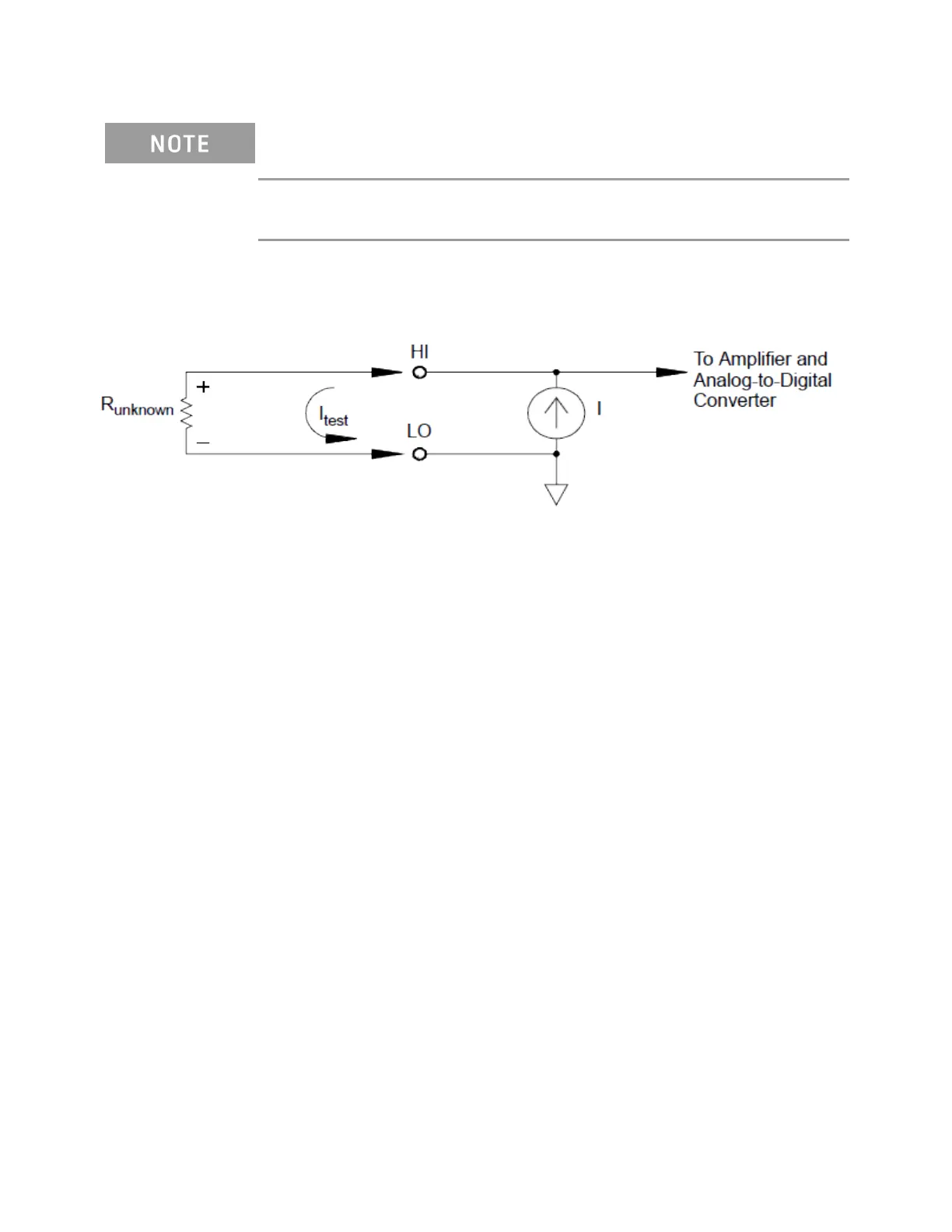Resistance Measurements
2-wire resistance measurements only supported on the DAQM900A, DAQM901A, DAQM902A,
and DAQM908A multiplexer modules.
4-wire resistance measurements only supported on the DAQM900A, DAQM901A, and
DAQM902A multiplexer modules.
An ohmmeter measures the DC resistance of a device or circuit connected to its input. Resistance meas-
urements are performed by supplying a known DC current to an unknown resistance and measuring the
DC voltage drop.
The internal DMM offers two methods for measuring resistance: 2-wire and 4-wire ohms. For both meth-
ods, the test current flows from the input HI terminal through the resistor being measured. For 2-wire
ohms, the voltage drop across the resistor being measured is sensed internal to the DMM. Therefore, test
lead resistance is also measured. For 4-wire ohms, separate “sense” connections are required. Since no cur-
rent flows in the sense leads, the resistance in these leads does not give a measurement error.
4-Wire Ohms Measurements
The 4-wire ohms method provides the most accurate way to measure small resistances. Test lead, mul-
tiplexer, and contact resistances are automatically reduced using this method. The 4-wire ohms method is
often used in automated test applications where long cable lengths, input connections, and a multiplexer
exist between the internal DMM and the device-under-test.
The recommended connections for 4-wire ohms measurements are shown in the diagram on the following
page. A constant current source, forcing current I through unknown resistance R, develops a voltage
measured by a DC voltage front end. The unknown resistance is then calculated using Ohm’s Law.
The 4-wire ohms method is used in systems where lead resistances can become quite large and variable
and in automated test applications where cable lengths can be quite long. The 4-wire ohms method has
the obvious disadvantage of requiring twice as many switches and twice as many wires as the 2-wire
method. The 4-wire ohms method is used almost exclusively for measuring lower resistance values in any
application, especially for values less than 10 Ω and for high-accuracy requirements such as RTD tem-
perature transducers.
4Measurement Tutorials
204 Keysight DAQ970A User's Guide

